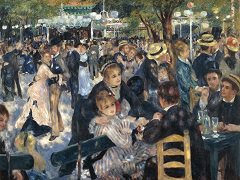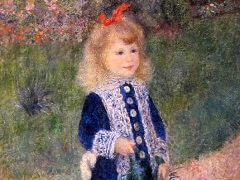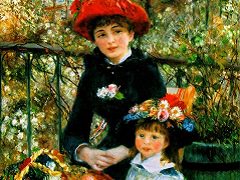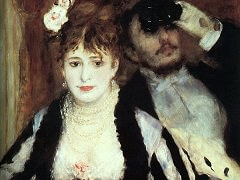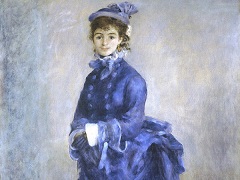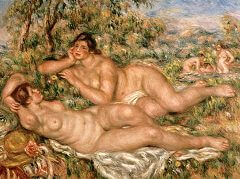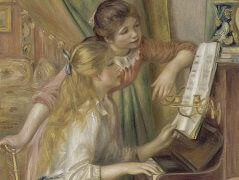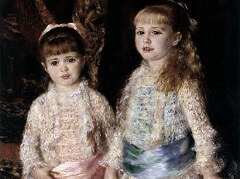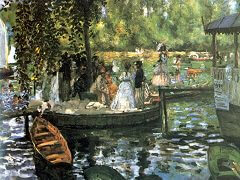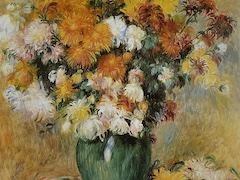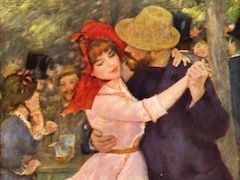Reclining Nude - by Pierre-Auguste Renoir

The great painters of the female nude have all given us their versions of this type of composition: the figure recumbent in graceful ease amidst settings bucolic, contrived, or intimate. One thinks of Titian's Venus of Urbino, Giorgione's goddesses, Boucher's eighteenth-century party girls, and also of Manet's brazen, tongue-in-cheek Olympia. Like the panels of the earlier masters, this is not a study of the nude for the sake of representation primarily. It is more in the nature of lyric invention.
Here, Renoir has simplified both the drawing and the modeling of the figure to attain a surface that undulates in gentle swells, recalling bas-relief sculpture; and any strong projection from this flowing surface is suppressed. Thus, the angle formed by feet and lower legs is suggested only; so are the knee angles formed naturally in this posture by upper and lower legs; and, again, the angle where torso and thighs join. Anatomical details are not allowed to interrupt the soft movement of the surface, even at the expense of realism.
In harmony with this treatment of the body is the beautiful rhythm of long, graceful contours, sweeping but sensuous curves. The forms of the foliage clusters and the distant hills echo the rhythmic motifs of the body.
The warm tints of the figure reach their fullest statement in the face and hair, and through the ruddy color behind the girl, presumably a garment, permeate the distant landscape. Conversely, the cools of the setting reach their maximum statement in the white cloth (so often the great painters contrast flesh with white) beneath her.
This type of indolently graceful figure became for a while a Renoir stock-in-trade: long-waisted, with the fullness of the hips placed quite low; full thighs; small breasts placed higher, and more widely separated, than is natural; full, chubby arms; a round head that is large in proportion to other details.
Renoir painted many variations of this sort of canvas and the best of them easily take their place beside their great ancestors in the past.


